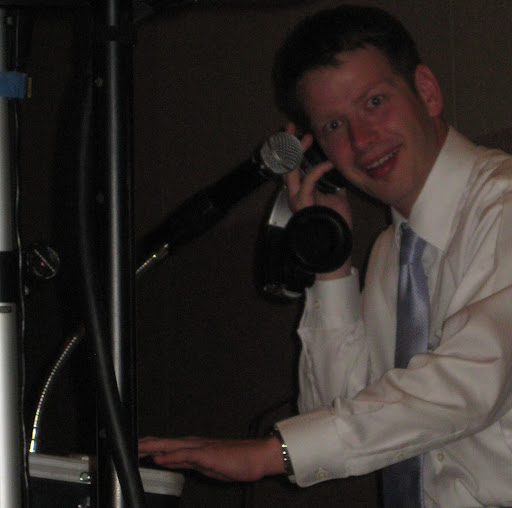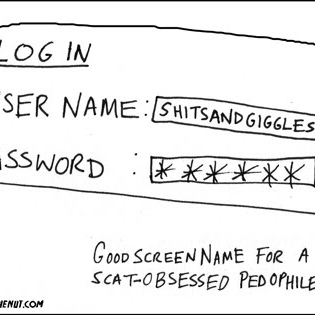Charles D Mckenna
from Fredericksburg, VA
- Also known as:
-
- C D Mckenna
- D Mccharles
- Doug Mc
- Doug Mckenna
- Phone and address:
-
9704 Charlesfield Dr, Fredericksburg, VA 22407
5408917869
Charles Mckenna Phones & Addresses
- 9704 Charlesfield Dr, Fredericksburg, VA 22407 • 5408917869
- Alexandria, VA
- Detroit, MI
- West Point, NY
- East Lansing, MI
- Lansing, MI
- South Bend, IN
- Silver Spring, MD
Work
-
Company:McKenna Law Corporation
-
Address:
Specialities
Real Estate • Real Estate Finance • Corporate Law • Partnership Law • Limited Liability Company Law • Mergers and Acquisitions • General Practice
Lawyers & Attorneys

Charles Mckenna - Lawyer
view sourceOffice:
McKenna Law Corporation
Specialties:
Real Estate
Real Estate Finance
Corporate Law
Partnership Law
Limited Liability Company Law
Mergers and Acquisitions
General Practice
Real Estate Finance
Corporate Law
Partnership Law
Limited Liability Company Law
Mergers and Acquisitions
General Practice
ISLN:
904946688
Admitted:
1974
University:
American University, M.A., 1969; Marquette University, A.B., 1960
Law School:
University of Virginia, J.D., 1974
Us Patents
-
Multipole Implantation-Isotope Separation Ion Beam Source
view source -
US Patent:43831770, May 10, 1983
-
Filed:Dec 24, 1980
-
Appl. No.:6/219652
-
Inventors:John H. Keller - Newburgh NY
Charles M. McKenna - Fishkill NY -
Assignee:International Business Machines Corporation - Hopewell Junction NY
-
International Classification:H01J 2700
-
US Classification:250423R
-
Abstract:A plurality of magnetic pole pieces are arranged around the external wall of a high temperature plasma confining structure. The pole pieces are positioned between permanent magnets spaced from one another and the confining structure by distances calculated to produce a minimum field toward the center of the structure with an effective containing field around the periphery of the structure. The magnets and the pole pieces are cooled. An odd number of poles are employed such that the missing pole appears as a virtual pole at the extraction slit used for forming an ion beam for ion implantation. The resulting small package multipole plasma containment functions to provide higher beam current, longer source lifetime, higher voltage stability and reduces maintenance and cleaning operations, with the permanent magnets protected from high temperature and corrosive gases.
-
Apparatus For The Formation Of Epitaxial Layers Doped With Conductivity-Determining Impurities By Ion Deposition
view source -
US Patent:41514203, Apr 24, 1979
-
Filed:Dec 8, 1977
-
Appl. No.:5/858486
-
Inventors:John H. Keller - Newburgh NY
Charles M. McKenna - Fishkill NY
James R. Winnard - Poughkeepsie NY -
Assignee:International Business Machines Corporation - Armonk NY
-
International Classification:A61K 2702
-
US Classification:250492A
-
Abstract:An apparatus for depositing a monocrystalline epitaxial layer of semiconductor material, e. g. , silicon containing selected conductivity-determining impurities, on a semiconductor substrate comprising directing a beam of ions of said semiconductor material at the surface of the semiconductor substrate at an energy level below 0. 5 Kev. , and simultaneously directing a beam of the conductivity-determining impurity ions at at least a portion of the substrate surface whereby a layer of semiconductor material containing said conductivity-determining impurities is formed on said surface, and heating said layer to a temperature of at least 550. degree. C. to render said layer monocrystalline. The beams of semiconductor ions and of conductivity-determining impurity ions are preferably maintained at a high current density of at least 1 ma/cm. sup. 2 at the surface of said semiconductor substrate even with a preferable relatively broad beam having diameters of up to 15 cm.
-
Photon Enhanced Reactive Ion Etching
view source -
US Patent:41837800, Jan 15, 1980
-
Filed:Aug 21, 1978
-
Appl. No.:5/934733
-
Inventors:Charles M. McKenna - Fishkill NY
H. Keith Willcox - Poughkeepsie NY -
Assignee:International Business Machines Corporation - Armonk NY
-
International Classification:H01L 21306
C03C 1500
C03C 2506 -
US Classification:156643
-
Abstract:A method and apparatus for modifying a surface, by either plasma etching the surface or plasma depositing a material thereon, by using vacuum ultraviolet radiation to control the modification of the surface.
-
Formation Of Epitaxial Layers Doped With Conductivity-Determining Impurities By Ion Deposition
view source -
US Patent:41793129, Dec 18, 1979
-
Filed:Nov 20, 1978
-
Appl. No.:5/962442
-
Inventors:John H. Keller - Newburgh NY
Charles M. McKenna - Fishkill NY
James R. Winnard - Poughkeepsie NY -
Assignee:International Business Machines Corporation - Armonk NY
-
International Classification:H01L 21203
H01L 21263 -
US Classification:148 15
-
Abstract:A method and apparatus for depositing a monocrystalline epitaxial layer of semiconductor material, e. g. , silicon containing selected conductivity-determining impurities, on a semiconductor substrate comprising directing a beam of ions of said semiconductor material at the surface of the semiconductor substrate at an energy level below 0. 5 Kev. , and simultaneously directing a beam of the conductivity-determining impurity ions at at least a portion of the substrate surface whereby a layer of semiconductor material containing said conductivity-determining impurities is formed on said surface, and heating said layer to a temperature of at least 550. degree. C. to render said layer monocrystalline. The beams of semiconductor ions and of conductivity-determining impurity ions are preferably maintained at a high current density of at least 1 ma/cm. sup. 2 at the surface of said semiconductor substrate even with a preferable relatively broad beam having diameters of up to 15 cm.
-
Negative Ion Extractor For A Plasma Etching Apparatus
view source -
US Patent:41585895, Jun 19, 1979
-
Filed:Dec 30, 1977
-
Appl. No.:5/865811
-
Inventors:John H. Keller - Newburgh NY
Charles M. McKenna - Fishkill NY -
Assignee:International Business Machines Corporation - Armonk NY
-
International Classification:B01K 100
C23F 102 -
US Classification:156345
-
Abstract:Process and apparatus for use in extracting negative ions from a plasma which is particularly useful in reactive ion etching of metals, silicon and oxides and nitrides of silicon in the manufacture of semiconductor devices. A magnetic field is employed in the apparatus and, herein, is created by a novel grid, through which negative ions pass to a surface, such as one to be etched, while free electrons are prevented from passing through the grid and out of the plasma. The novel process utilizes negative ions which have a large fraction in the atomic state.
-
Ion Implantation Apparatus For Controlling The Surface Potential Of A Target Surface
view source -
US Patent:41350979, Jan 16, 1979
-
Filed:May 5, 1977
-
Appl. No.:5/794276
-
Inventors:John L. Forneris - Lagrangeville NY
William W. Hicks - Wappingers Falls NY
John H. Keller - Newburgh NY
Charles M. McKenna - Fishkill NY
James A. Seirmarco - Buchanan NY -
Assignee:International Business Machines Corporation - Armonk NY
-
International Classification:A61K 2702
-
US Classification:250492B
-
Abstract:In an ion beam apparatus a structure for controlling the surface potential of the target comprising an electron source adjacent to the beam for providing electrons to the beam and means between the target and source for inhibiting rectilinear radiations, i. e. , electron and other particle and photon radiations between said source and said target. This prevents heating of the target by the electron source and cross-contamination between the source and the target. A further structure is provided for the measurement of the ion beam current while controlling said surface potential of the target which includes: walls adjacent to and electrically insulated from the target and surrounding the beam whereby the walls and target provide a Faraday Cage, means for introducing variable quantities of electrons into the beam within the Faraday Cage, means for measuring the target current, means for combining and measuring the target and wall currents to provide said ion beam current measurement and means for varying the quantities of introduced electrons to control the target current and thereby the target surface potential.
-
Ion Implantation Apparatus With A Cooled Structure Controlling The Surface Potential Of A Target Surface
view source -
US Patent:41186303, Oct 3, 1978
-
Filed:May 5, 1977
-
Appl. No.:5/794275
-
Inventors:Charles M. McKenna - Fishkill NY
Wolfgang F. Mueller - Wappingers Falls NY -
Assignee:International Business Machines Corporation - Armonk NY
-
International Classification:H01J 3700
-
US Classification:250492A
-
Abstract:In an ion beam apparatus a structure for controlling the surface potential of the target comprising an electron source adjacent to the beam for providing electrons to the beam and means between the target and source for inhibiting rectilinear radiations, i. e. , electron and other particle and photon radiations between said source and said target. This prevents heating of the target by the electron source and cross-contamination between the source and the target. The apparatus further includes means for maintaining said shield means at a lower temperature than said target. A further structure is provided for the measurement of the ion beam current while controlling said surface potential of the target which includes: walls adjacent to and electrically insulated from the target and surrounding the beam whereby the walls and target provide a Faraday Cage, means for introducing variable quantities of electrons into the beam within the Faraday Cage, means for measuring the target current, means for combining and measuring the target and wall currents to provide said ion beam current measurement and means for varying the quantities of introduced electrons to control the target current and thereby the target surface potential. Likewise, this apparatus further includes means for maintaining said shielding means at a temperature lower than said target.
Name / Title
Company / Classification
Phones & Addresses
Principal
Tidy Garage LLC
General Auto Repair
General Auto Repair
501 N Elizabeth St, Dearborn, MI 48128
Cip Portfolio Manager LLC
Real Estate Management
Real Estate Management
DGC MANAGEMENT COMPANY, INC
Principal
Bright Angel Trail Solutions
Nonclassifiable Establishments
Nonclassifiable Establishments
501 N Elizabeth St, Dearborn, MI 48128
Resumes

Charles Mckenna
view source
Charles Mckenna
view source
Charles Mckenna
view source
President At My Own Business
view sourceLocation:
Washington D.C. Metro Area
Industry:
Executive Office

Charles Mckenna
view sourceLocation:
United States
License Records
Charles B Mckenna
License #:
RS122022A - Expired
Category:
Real Estate Commission
Type:
Real Estate Salesperson-Standard
Isbn (Books And Publications)


Charles Mckenna
view source
Charles Patrick Mckenna
view source
Charles McKenna
view source
Charles Matthew McKenna
view source
Charles Patterson McKenna
view source
Charles McKenna
view source
Charles Mckenna
view source
Charles Mac McKenna
view sourceYoutube
Plaxo

Charles Mckenna
view sourceBranch Manager at Wells Fargo Past: Sr Loan Officer at Chase Home Finance

Charles E. McKenna
view sourceSenior Maintenance Analyst at AFRL- RXSSR (SK&T) C...

CHARLES MCKENNA
view sourceRobins AFB

Charles McKenna Jr.
view sourceRohm and Haas
Classmates

Charles E. McKenna
view sourceSchools:
Bishop David High School Louisville KY 1963-1967
Community:
Mark Talley, John Sodini

Charles E. McKenna
view sourceSchools:
Shawnee High School Louisville KY 1964-1968
Community:
Lometia Gibbs, Bryan Shofner, Randy Mccoy, Eddie Kimes

Charles McKenna
view sourceSchools:
Woodrow Wilson High School Levittown PA 1969-1973
Community:
Janice Bernath

Charles McKenna
view sourceSchools:
Granby Memorial High School Granby CT 1966-1967
Community:
Gilbert Ankney, Kerry Vandegrift

Charles McKenna
view sourceSchools:
Montreal West High School Montreal Kuwait 1961-1965
Community:
Victoria Haines, Ute Reinhard, Sandra Niemi, Mona Cogan, H Bray, John Brkich, Winifred Daniel

Charles McKenna
view sourceSchools:
Holy Family High School Massena NY 1966-1967, The Manlius School Manlius NY 1969-1970, Manlius Pebble Hill High School De Witt NY 1969-1972
Community:
Loma Jarvis, Debbie Frichette, Lynda Quesnel, Phyllis Connelly, Mary Mccook, Susan Bissonette

Charles McKenna
view sourceSchools:
St. Francis Xavier Elementary School East Providence RI 1934-1937, Summit Avenue School Providence RI 1937-1940
Community:
Joseph Zinno, Syd Narva, Beverly Granoff, Bette Orkin, Edward Williams, June Ellingwood, Clare Powers, Gloria Weiner, Dolores Cohen, Daniel Lecht

Charles McKenna | New Was...
view sourceMyspace
Flickr
Googleplus

Charles Mckenna
Education:
Eastern Michigan University - Public Administration

Charles Mckenna

Charles Mckenna

Charles Mckenna

Charles Mckenna

Charles Mckenna

Charles Mckenna

Charles Mckenna
Get Report for Charles D Mckenna from Fredericksburg, VA
















